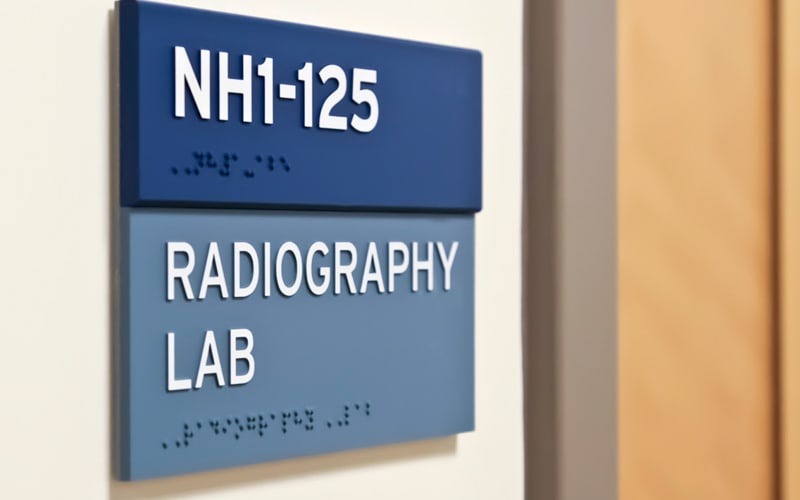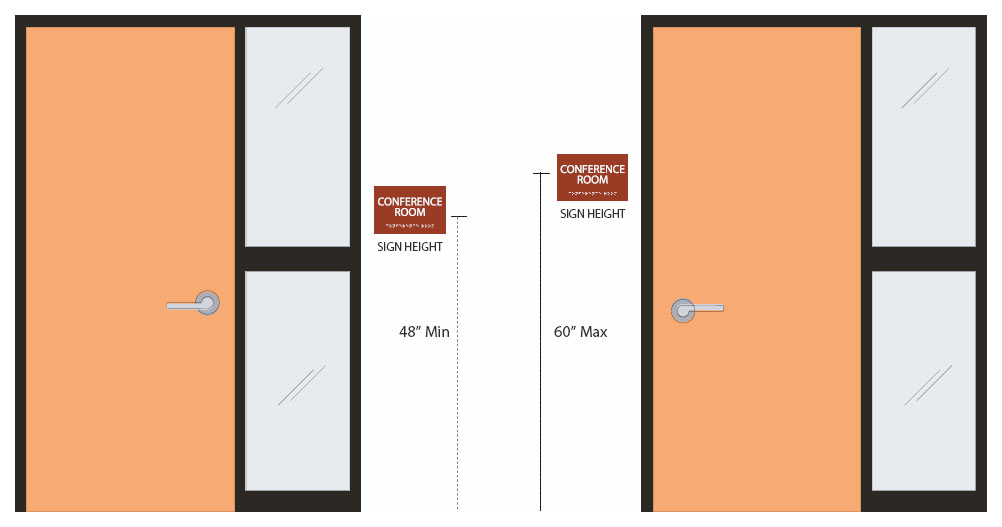The Benefits of Using High-Quality ADA Signs in Your Business
The Benefits of Using High-Quality ADA Signs in Your Business
Blog Article
ADA Signs: Guaranteeing Accessibility and Compliance in Public Spaces
ADA signage plays an essential duty in ensuring access and compliance within public rooms, dramatically contributing to a comprehensive environment for people with handicaps. As we check out the subtleties of ADA signs, from tactile features to develop complexities, it's crucial to consider just how these elements coalesce to promote the rights of all customers.
Value of ADA Signs
In modern society, the importance of ADA signage extends past mere compliance with legal requireds to personify a commitment to inclusivity and accessibility for all people. These indicators are crucial in creating settings where people with specials needs can browse public areas with the same convenience and self-reliance as those without impairments. By offering standard and clear details, ADA signage makes certain that everyone can access centers, services, and details without barriers.
The value of ADA signs lies in its capacity to enhance the quality of life for individuals with specials needs by advertising equivalent access. It removes the barriers that may otherwise impede their capacity to participate completely in area life. These indicators serve as visible indicators of an organization's commitment to variety and equality, showing wider societal worths that champion the rights and self-respect of all individuals.
Additionally, ADA signage plays a crucial duty in public safety. By directing people to exits, toilets, and other important facilities, it guarantees that all individuals, no matter physical ability, can evacuate securely throughout emergency situations. In summary, ADA signage is not simply a governing requirement however an effective tool for fostering a fair and comprehensive society.
Trick Elements of Conformity

Positioning is essential; signs should be mounted in locations that are easily noticeable and reachable. Typically, signage should be placed in between 48 and 60 inches from the ground to make sure availability for both standing and wheelchair users. Responsive elements, such as Braille, are important for individuals with aesthetic disabilities, giving crucial info in a non-visual layout.
High-contrast shades between the message and background are required to enhance readability for people with reduced vision. The ADA mandates certain comparison proportions to guarantee clearness. Additionally, personality size is a key consideration, with minimum elevation needs determined by the seeing distance to make certain readability from various angles.
Style Factors To Consider for Ease Of Access
Creating accessible signs needs a precise strategy to guarantee it satisfies the needs of all individuals, particularly those with disabilities. This involves taking into consideration various style elements that improve readability and usability. Trick aspects include the selection of typeface, shade comparison, and responsive features. Fonts ought to be sans-serif, with easy and clear letterforms, to promote very easy reading. The size of the text is just as vital, with ADA guidelines advising a minimal height based on checking out distance to make sure clarity.
Contrasting colors between text and background are vital for exposure, particularly for individuals with aesthetic problems. Furthermore, responsive elements, such as Braille and raised personalities, are essential for people who are blind or have low vision.
Furthermore, the placement of signage plays a significant duty in accessibility. Indicators must be set up in locations that are conveniently reachable and unobstructed. Guaranteeing that signs is installed at proper elevations and angles enables all individuals, consisting of those utilizing wheelchairs, to connect with them successfully.
Typical Mistakes to Stay Clear Of

An additional common mistake is the inaccurate positioning of signage. ADA standards define specific height and area requirements to make certain that signs are obtainable and quickly noticeable by all individuals, including those making use of wheelchairs. Ignoring these guidelines not just hinders access however additionally runs the risk of non-compliance with lawful standards.
Furthermore, inadequate comparison in between text and background is a regular oversight. Adequate contrast is necessary for readability, specifically for individuals with low vision. Designers in some cases pick shades that are visually appealing but do not have the essential comparison, providing the text challenging to determine.
Last but not least, some developers stop working to incorporate tactile aspects, such as this hyperlink Braille, which are critical for individuals who are blind. Omitting these features not only leads to non-compliance with ADA laws yet also restricts access for a segment of the population that depends on responsive information.
Future Trends in Signage
Innovations in modern technology and raising understanding of inclusivity are shaping the future fads in signs style. Digital signage, for circumstances, is advancing to include interactive functions and real-time updates, which can be critical in providing vibrant information in public rooms.
One more emerging pattern is the utilization of increased reality (AR) to boost user experience. AR-enabled signs can overlay digital info onto the physical environment, giving visually damaged people with auditory or haptic comments. ADA Signs. This modern find technology not only enhances ease of access yet likewise develops an engaging experience for all individuals
Sustainability is additionally a significant aspect affecting signage fads. Green materials and energy-efficient lighting options are being focused on to align with worldwide environmental goals. Advancements in materials science are leading to the advancement of even more weather-resistant and sturdy signs.
Conclusion
ADA signs plays an essential duty in assuring accessibility and compliance within public areas by integrating tactile components, high-contrast shades, and tactical placement. The adherence to ADA requirements not only helps with risk-free navigation for individuals with impairments however likewise symbolizes a company's commitment to diversity and inclusivity. By avoiding common mistakes and embracing future trends, public spaces can remain to progress these worths, making certain that the civil liberties and self-respect of all individuals are appreciated and upheld.
ADA signage plays an indispensable duty in assuring availability and conformity within public spaces, considerably contributing to an inclusive environment for people with handicaps. As we check out the nuances of ADA signage, from responsive functions to develop complexities, it's important to consider just how these aspects coalesce to promote the civil liberties of all wikipedia reference individuals.In modern culture, the relevance of ADA signs expands past simple compliance with lawful mandates to embody a dedication to inclusivity and ease of access for all individuals. By supplying standard and clear info, ADA signage guarantees that every person can access facilities, solutions, and info without obstacles.
ADA signage plays an essential function in guaranteeing availability and compliance within public rooms by incorporating responsive elements, high-contrast shades, and strategic positioning. (ADA Signs)
Report this page